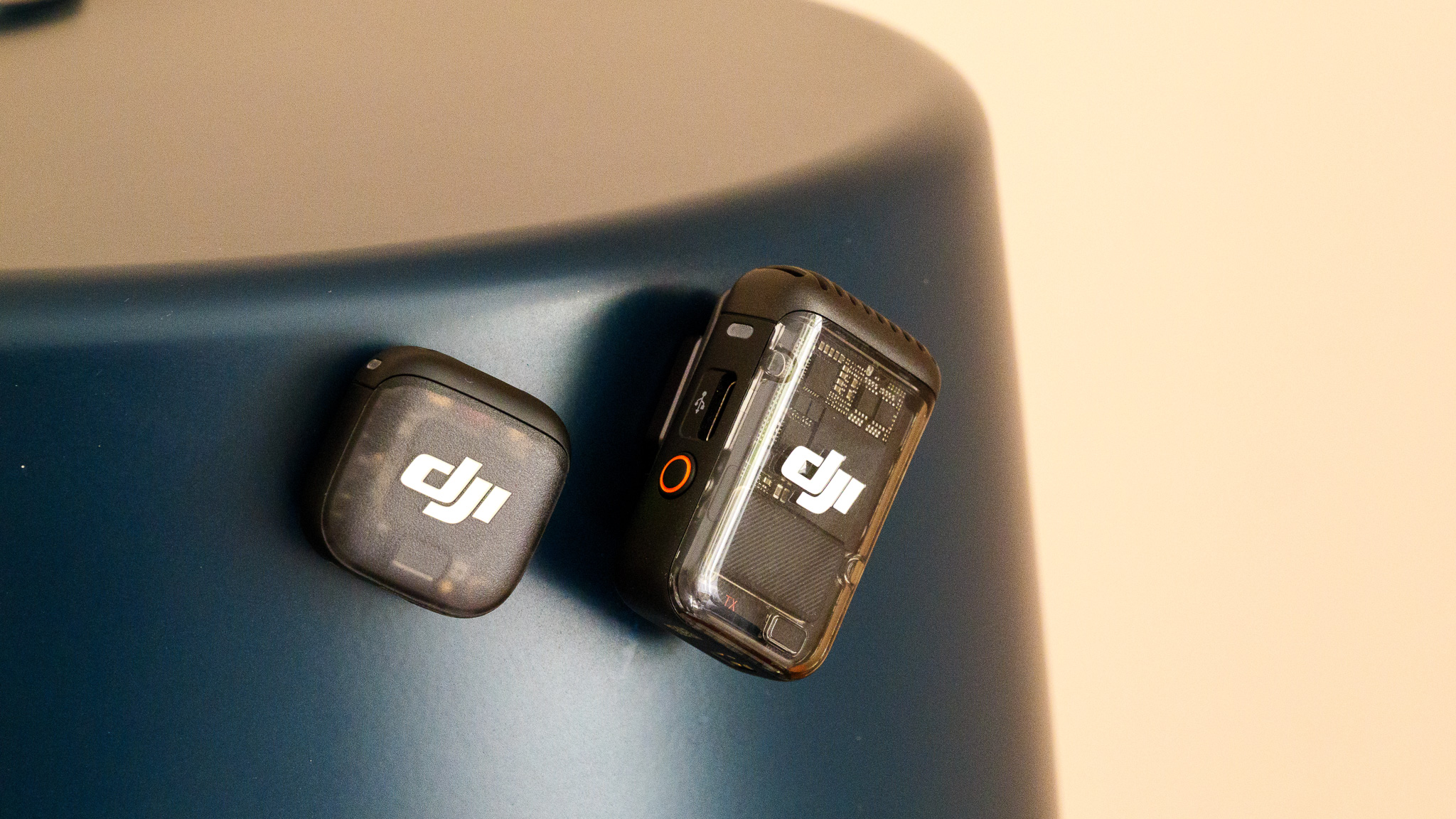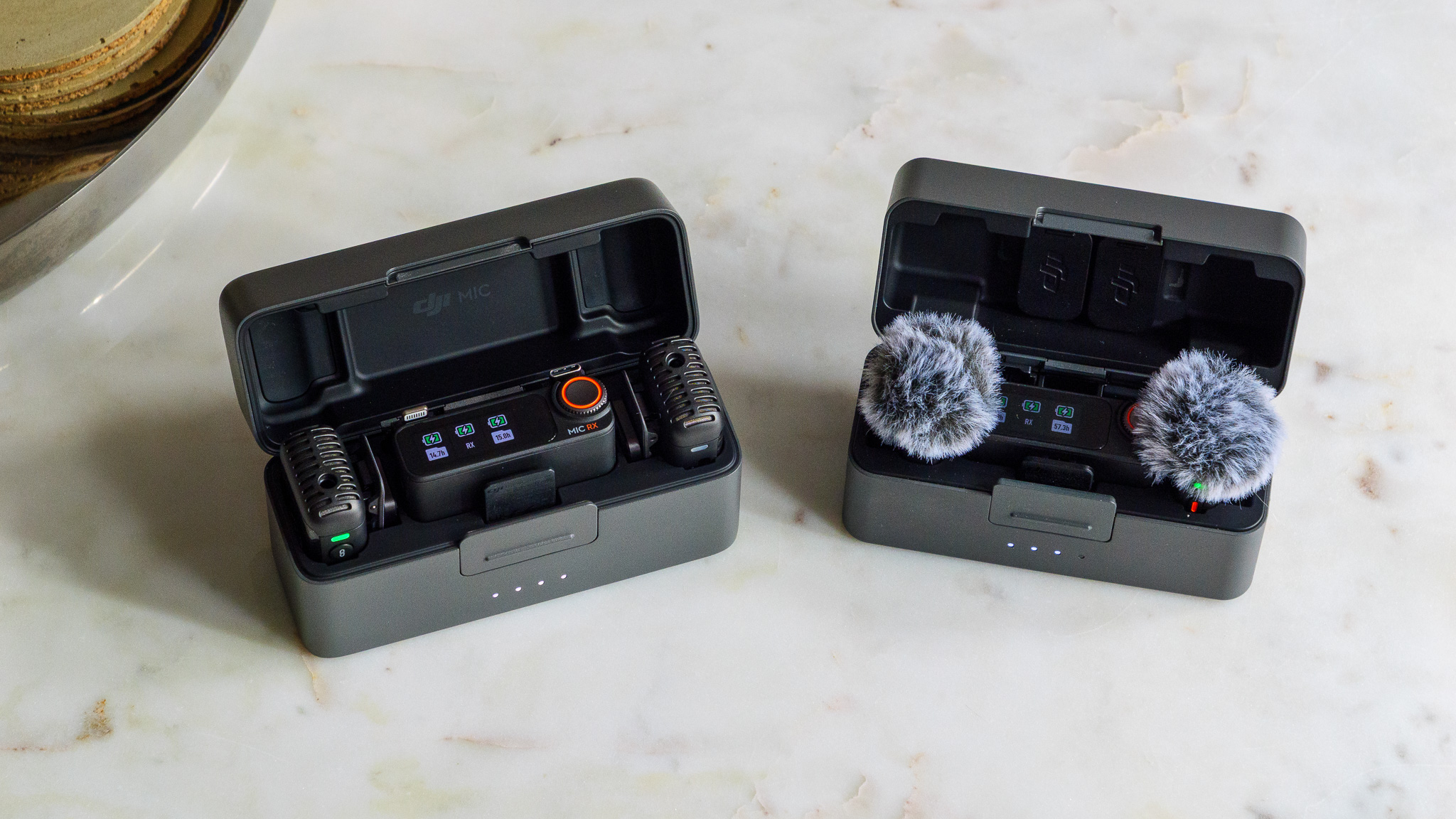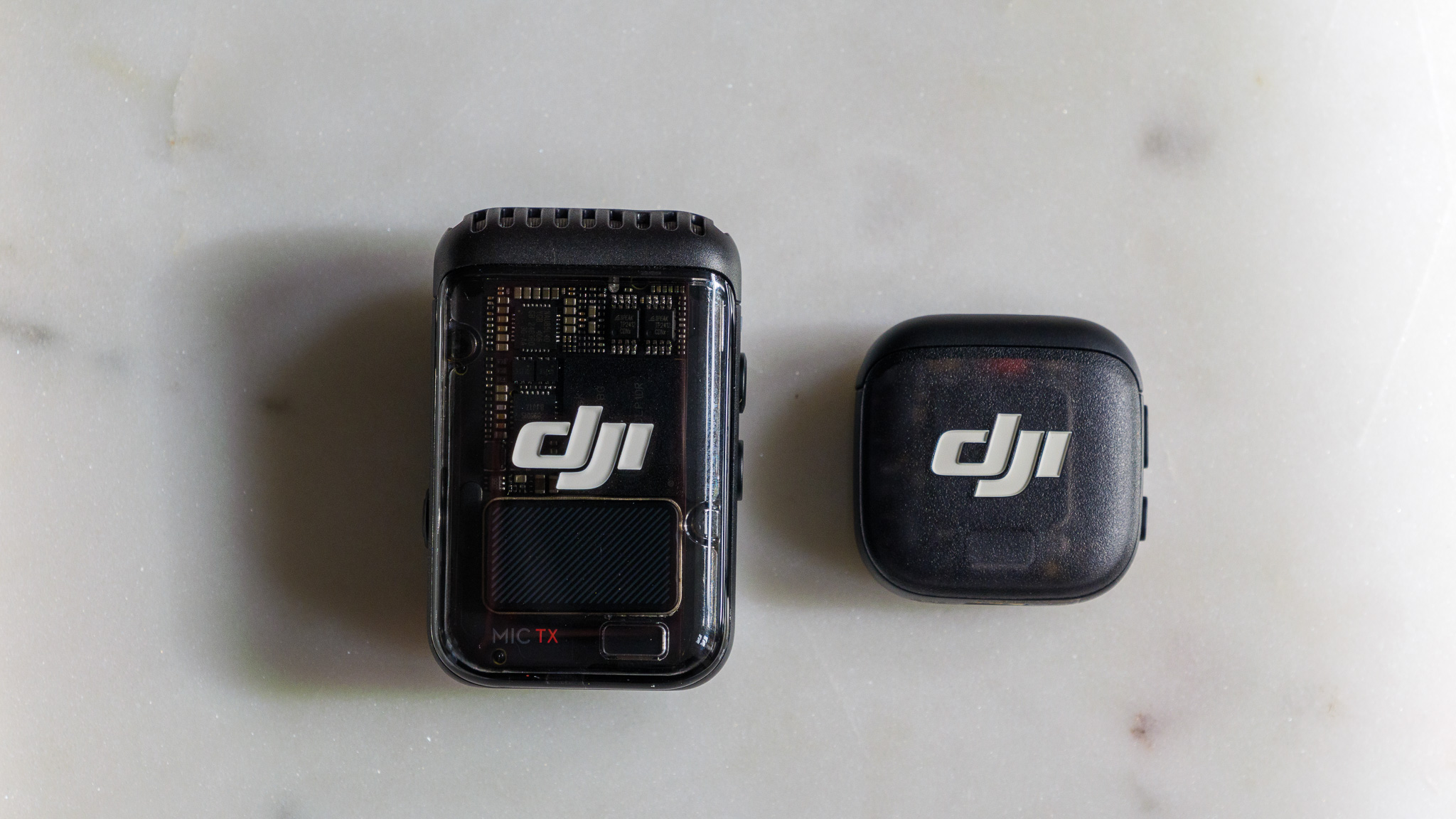DJI Mic 3 vs DJI Mic 2: I tested two flagship wireless mics, and there's one clear winner
Here’s how DJI’s premium wireless microphones compare on specs, features and performance

The DJI Mic 3 has just landed, promising to be the ultimate wearable wireless microphone for podcasters, journalists, filmmakers and other content creators. To do that, it’ll have to supplant our current favorite wireless mic, the DJI Mic 2.
The DJI Mic 2 itself hasn’t been out for very long, so updating the range with a brand-new model only 18 months after its release is a bold move from DJI. So, how do the two DJI wireless mics compare? Should DJI Mic 2 owners switch or stick? And should prospective buyers pick up the new model or save money by opting for the old?
Having tested both the Mic 3 and Mic 2 extensively (do take a look at my full DJI Mic 3 review) I’m here to share my thoughts.
1. DJI Mic 3 vs DJI Mic 2: Audio quality
- Both cameras support 24-bit/48kHz and 32-bit float audio
- Mic 3 adds lossless recording, voice tone presets and two-level noise cancelling
When broken down to the raw specifications, there’s little to no difference between the DJI Mic 2 and Mic 3. Both record audio at 24-bit/48kHz quality as standard, and both support 32-bit float recording – an option designed to ensure recordings can be made to sound great in post-production, no matter what your gain setting is. Both also offer an optional low cut filter and active noise cancelling.
In reality, the Mic 3 features some new tricks that make it slightly better on the audio front. There’s Adaptive Gain Control, which dynamically adjusts the Mic 3 gain to cope with changing conditions, and a set of three vocal presets to slightly color the tone of recorded voices.
Finally, noise cancelling has two levels on the Mic 3, while on the Mic 2 it’s either on or off. I found the noise cancelling more effective on the Mic 3 too, as demonstrated in the video embedded below. Overall, while both microphones have excellent audio quality, I think the Mic 3’s extra features give it a clear edge.
- Audio quality winner: DJI Mic 3

2. DJI Mic 3 vs DJI Mic 2: Design and features
- Mic 3 transmitter weighs 16g; Mic 2's weighs 28g
- Mic 3 transmitter offers 32GB of on-board storage to Mic 2's 8GB
- Mic 3 supports timecode and 4 x TX / 8 x RX multi-cam support
One immediately clear difference between these microphones is the transmitter size. The Mic 2’s transmitters are on the large side and weigh 28g, while the Mic 3’s weigh just 16g and are about half as big. Both are easily wearable without discomfort, but I’d much rather be wearing the smaller one. And, despite being smaller, the Mic 3 has more on-board storage: 32GB as opposed to the 8GB of the Mic 2.
Sign up for breaking news, reviews, opinion, top tech deals, and more.
The Mic 2 transmitter’s size, however, means it has space for a USB-C port (which can be used for data transfer and recharging), an extra control button and a 3.5mm jack for a lavalier mic. The Mic 3’s more minimalist setup means no lav mic option and that charging and data must be handled wirelessly.
The Mic 3’s charging case is also smaller than the Mic 2’s, but manages to use its available space more efficiently. The Mic 2 case can’t accommodate the furry windshields that attach to the mic to muffle outdoor noise, but the Mic 3’s can – and I think that’s a bigger deal than it might sound. Having to carry them loose in your pocket is a pain, I’ve found.
On the features front, the Mic 3’s support for pro-level production features like timecode and multi-camera setups (it can support a system of up to four transmitters and eight receivers) makes it a clear winner.
- Design and features winner: DJI Mic 3
3. DJI Mic 3 vs DJI Mic 2: Performance
- Mic 2 has up to 18 hours battery life; Mic 3 has up to 28 hours
- Mic 2 max transmission range is 250m; Mic 3's is 400m
You might think a smaller size means a smaller battery, but no: according to DJI’s number, the DJI Mic 3 transmitter battery life is 8 hours, receiver battery life is 10 hours and the total operating time with a charging case is 28 hours. The DJI Mic 2, on the other hand, offers 6 hours, 6 hours and 18 hours respectively. So, with a full kit in your pocket, the new Mic 3 gives you up to 10 hours of extra recording time.
DJI has also boosted wireless transmission power. The DJI Mic 2 uses single-channel transmission and offers a respectable maximum working distance between transmitter and receiver of 250m in perfect conditions; the DJI Mic 3’s dual-channel setup works up to 400m in the same conditions.
- Performance winner: DJI Mic 3

4. DJI Mic 3 vs DJI Mic 2: Price
- DJI Mic 2 kits available from £139; DJI Mic 3 from £169
- DJI Mic 3 not officially available in the US at this time
When the DJI Mic 2 launched back at the beginning of 2024, it was priced at $349 / £309 for a complete kit (two transmitters, one receiver, charging case, USB-C and Lightning adapters) or $219 / £189 for a single transmitter and receiver package. That seemed like a good price at the time, and over the past 18 months or so it has dropped, in the UK at least, to £219 for the complete kit and £139 for the transmitter and receiver combo. (The Mic 2’s US price has remained the same, probably due to the tariff situation and the fact that the Mic 3 isn’t launching there.)
The DJI Mic 3 arrives at a lower price point of £259 for the complete kit (which now does not include a Lightning adapter – although it can be purchased separately) and £169 for the one-transmitter, one-receiver combo. It’s hard to argue that, given its clear advantages over the Mic 2, this isn’t a great deal.
- Price winner: DJI Mic 3
DJI Mic 3 versus DJI Mic 2: Early verdict
In conclusion, there’s really only one winner here: the DJI Mic 3. It’s smaller and more lightweight than the Mic 2, but offers far more audio features, better battery life, longer wireless range and more storage, plus a better charging case. In fact, the only thing the Mic 2 has the Mic 3 doesn’t is a 3.5mm input for lav mics on its transmitter – and that’s something of a niche advantage at best.
That’s not to say the DJI Mic 2 is bad at all. It was TechRadar’s top-rated wireless mic for a long time, and for many a good reason. If you already own one, there’s probably not pressing reason to immediately ditch it for the Mic 3 – unless of course there’s something on the new model you really, really want.
I myself own a Mic 2. Do I wish I’d waited a little longer and bought the Mic 3 instead? Yes. Am I going to sell my Mic 2 and replace it with its smaller and shinier successor? Not right now, but I can’t deny it’s tempting.
You might also like

Sam has been writing about tech and digital culture for over 20 years, starting off in video games journalism before branching out into the wonderful worlds of consumer electronics, streaming entertainment and photography. Over the years he has written for Wired, Stuff, GQ, T3, Trusted Reviews and PC Zone, and now lives on the Kent coast in the UK – the ideal place for a camera reviewer to ply their trade.
You must confirm your public display name before commenting
Please logout and then login again, you will then be prompted to enter your display name.